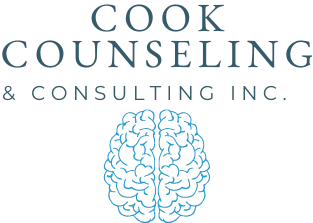As winter casts its icy spell, many individuals find themselves grappling with more than just cold temperatures. Winter Seasonal Affective Disorder (SAD), a type of depression linked to seasonal changes, can cast a shadow on mental well-being.
It’s easy to pass it off as ‘just the weather’ or ‘the winter blues’ but SAD affects about 3% of the total population and about 20% of those who already suffer from depression. For those who live in countries where winter days are very short and nights are long, the problem can get even worse.
Let’s answer the question of what is winter SAD, and how you can deal with it.
What is Winter Seasonal Affective Disorder (SAD)
Winter SAD shares similarities with major depressive disorder, encompassing a range of symptoms that affect mood, energy levels, and overall well-being. Individuals experiencing
Winter SAD may find themselves grappling with persistent feelings of sadness, a noticeable lack of energy, changes in sleep patterns, and alterations in appetite.
How Seasonal Shifts Cause SAD
The root of Winter SAD lies in the seasonal changes that accompany fall and winter, particularly the decrease in natural sunlight exposure. Reduced sunlight can disrupt the body’s internal biological clock, also known as the circadian rhythm.
This disruption affects the production of key neurotransmitters, such as serotonin and melatonin, both of which play pivotal roles in regulating mood and sleep.
Symptoms of SAD
Recognizing the symptoms of Winter SAD is crucial for early intervention. Common indicators include:
⦁Pervasive low mood
⦁Feelings of hopelessness
⦁Diminished interest in activities once enjoyed
⦁Changes in sleep patterns (oversleeping or insomnia)
⦁Fluctuations in weight and appetite
⦁Difficulty concentrating
⦁Notable lack of energy.
Causes and Triggers of SAD
Winter SAD is a complex interplay of biological and psychological factors. Genetic predispositions may make certain individuals more susceptible to the condition.
The reduced exposure to sunlight during the shorter days of fall and winter leads to changes in the body’s production of melatonin, a hormone that regulates sleep, and serotonin, a neurotransmitter that influences mood.
Additionally, individual vulnerabilities, such as pre-existing mental health conditions, can contribute to the onset of Winter SAD.
Navigating the Winter Blues: Strategies for Coping
Light Therapy
Exposure to light is a key element in managing Winter SAD. Light therapy, or phototherapy, involves using a bright light that mimics natural sunlight. Sitting in front of a lightbox for about 20-30 minutes each day can effectively regulate circadian rhythms, improve mood, and alleviate symptoms.
Go Outdoors
Combat the winter blues by spending time outdoors, even during the colder months. Engage in activities that expose you to natural light, such as brisk walks, hiking, or simply enjoying the winter scenery. Connecting with nature can have a positive impact on mood and overall well-being.
Physical Exercise
Regular physical activity is a powerful tool in managing Winter SAD. Exercise releases endorphins, the body’s natural mood lifters, and can counteract feelings of lethargy and fatigue. Incorporate activities you enjoy, whether it’s indoor workouts, outdoor sports, or yoga.
Nutrition and Lifestyle
Adopt a well-balanced diet rich in essential nutrients, including vitamin D. Since sunlight exposure is reduced in winter, obtaining sufficient vitamin D from food sources or supplements is crucial. Additionally, maintain a regular sleep schedule, staying mindful of sleep hygiene practices to ensure quality rest.
Seek Help
If symptoms persist or worsen, consider seeking professional help. Therapists, counselors, or mental health professionals can provide valuable support and coping strategies tailored to your specific needs. They can assist in addressing underlying issues contributing to Winter SAD.
References:
⦁Seasonal affective disorder: MedlinePlus Genetics. (n.d.). Medlineplus.gov. https://medlineplus.gov/genetics/condition/seasonal-affective-disorder/#:~:text=Seasonal%20affective%20disorder%20occurs%20in
⦁Overview – Seasonal affective disorder (SAD). (2021, February 12). Nhs.uk. https://www.nhs.uk/mental-health/conditions/seasonal-affective-disorder-sad/overview/#:~:text=Seasonal%20affective%20disorder%20(SAD)%20is

